WHEN YOU THINK OF GRAND AMERICAN ARCHITECTURE, you probably think of Chicago. Maybe New York or Seattle. But architecture in Arizona goes all out: The Grand Canyon alone could fit four skyscrapers on top of each other without reaching the rim, Petrified Forest National Park is still standing strong at 227 million years old — and that’s just the beginning of the state’s architectural hit list, all carefully designed over millennia by Mother Nature.
1. The Grand Canyon
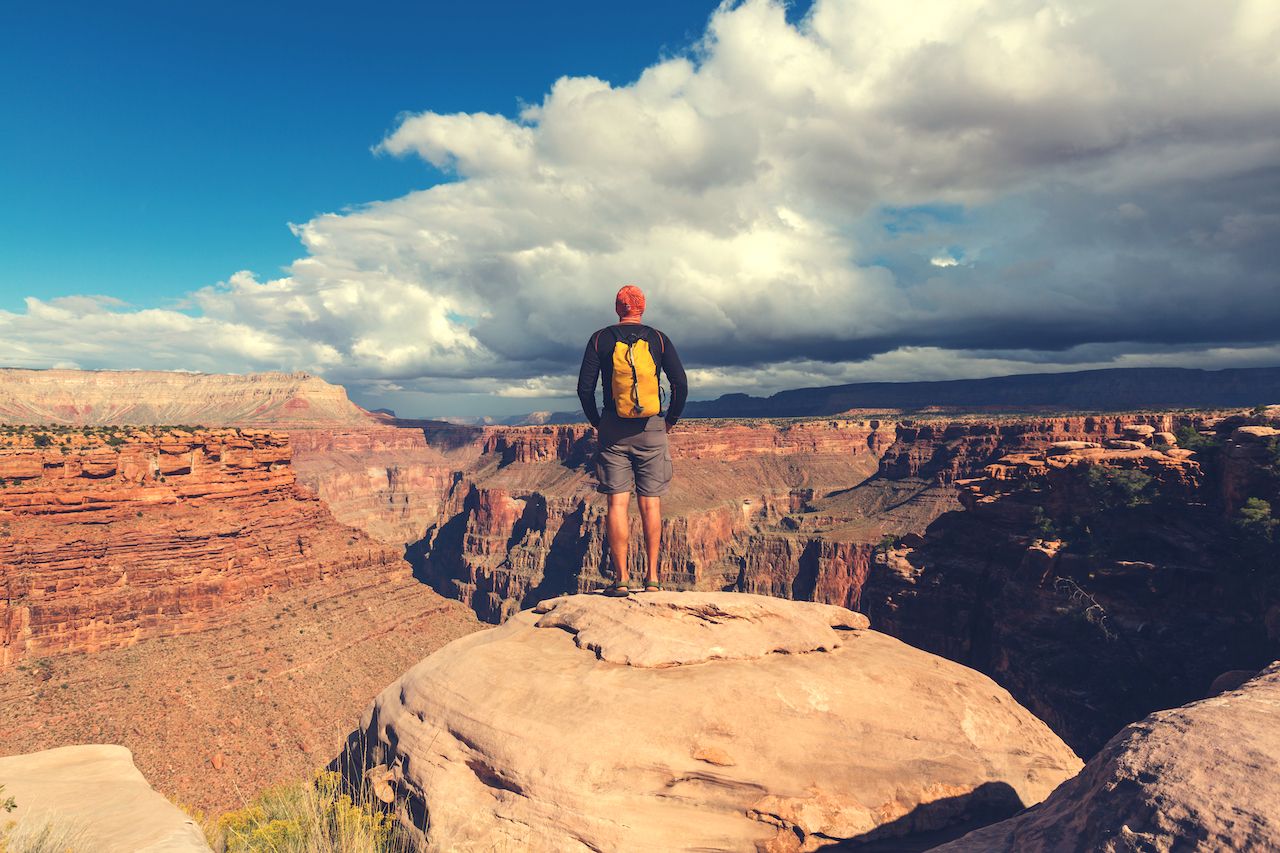
Photo: Galyna Andrushko/Shutterstock
A visit to the Grand Canyon is a visceral experience. Coming here for the first time, you realize it’s not just a sea of brown rocks — reds, purples, greens, and golds pop up in all corners (especially at sunrise and sunset). Given five seconds, you’ll also realize just how small (and young) you are. With a view like this, you’re looking at nearly two billion years of Earth’s history, and a natural feature that cuts for over 277 miles through the Colorado Plateau.
2. Lost Dutchman State Park
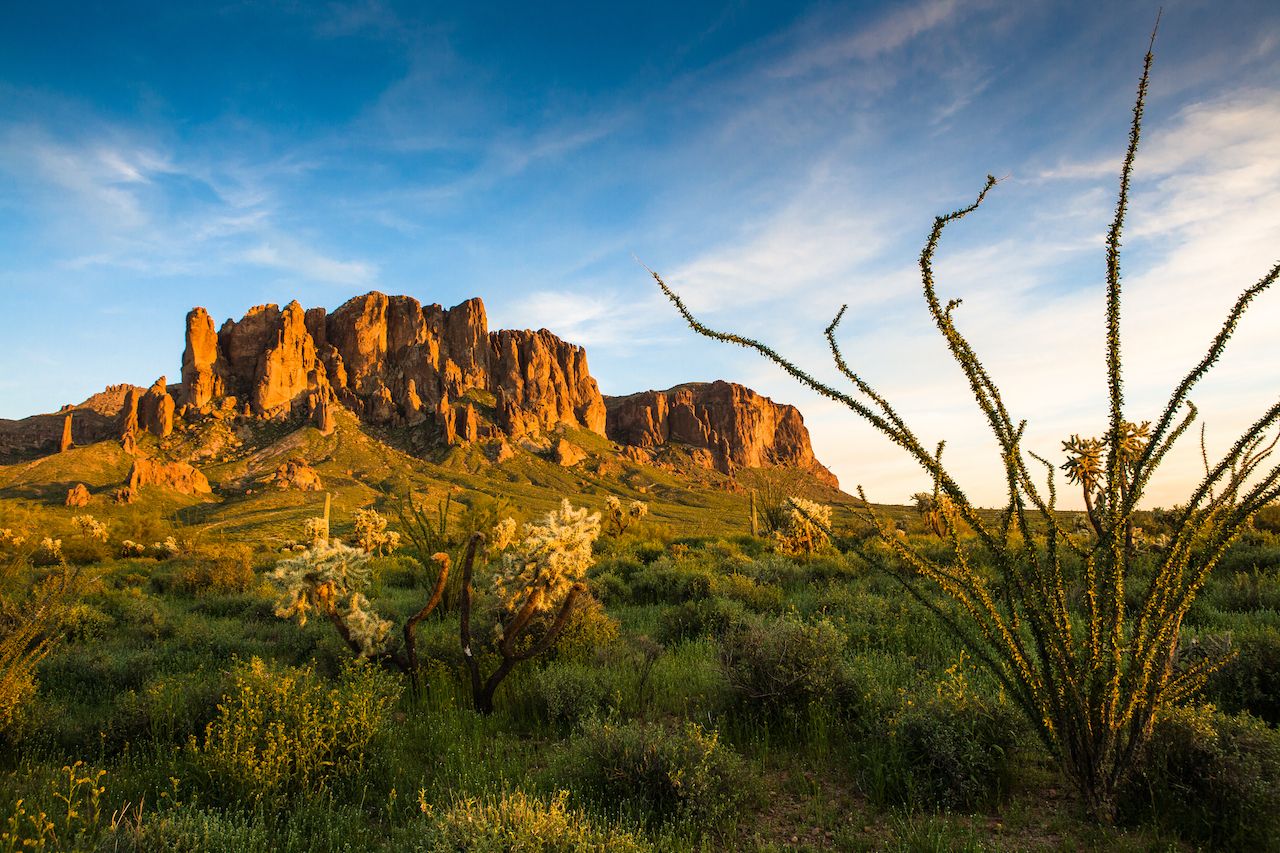
Photo: Laurens Hoddenbagh/Shutterstock
Forty miles east of Phoenix is Lost Dutchman State Park, sitting in the Superstition Mountains along the Superstition Freeway. It’s easy to see how the names were chosen when night falls and the shadowy figures of buttes and cacti come to life. The mountains are part of Tonto National Forest, and Lost Dutchman serves as a trailhead to higher elevations.
3. Monument Valley
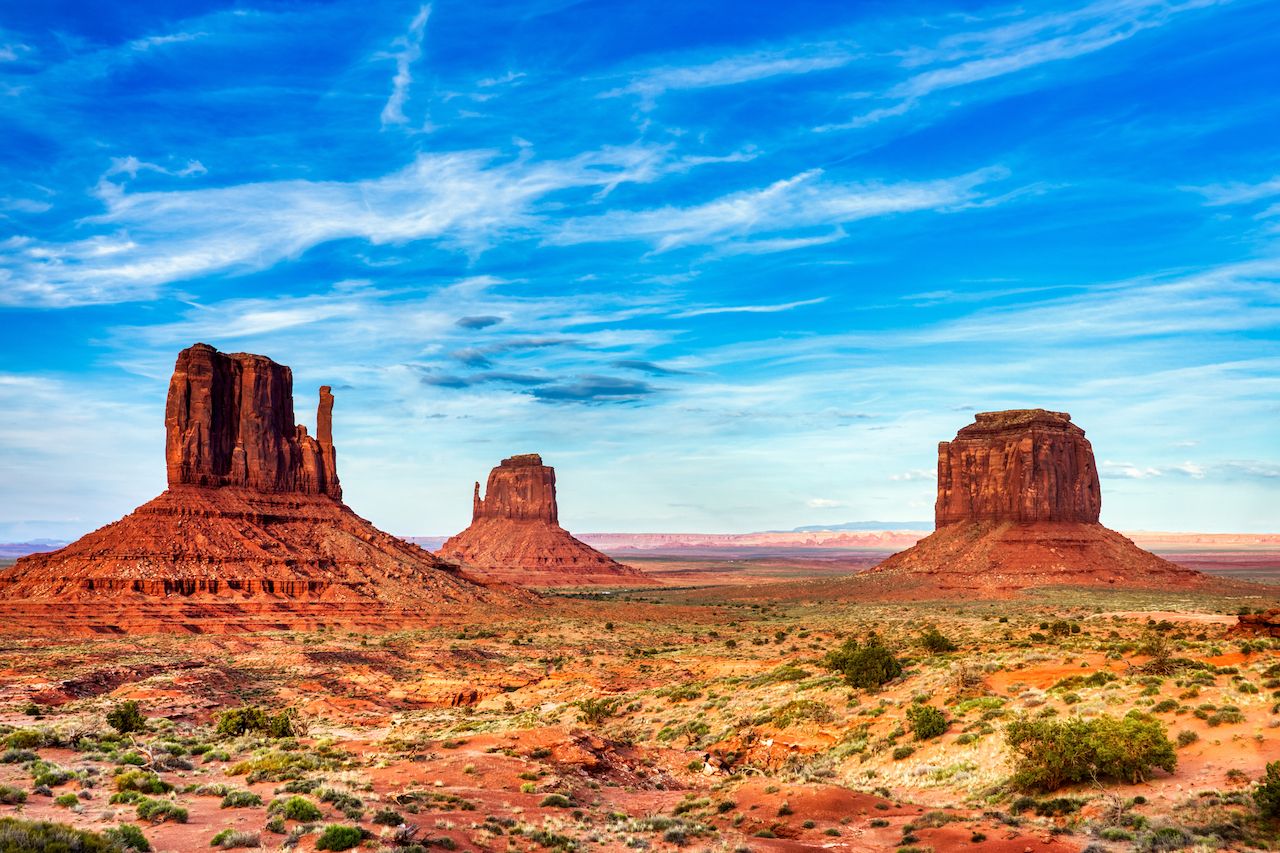
Photo: RomanSlavik.com/Shutterstock
Near Four Corners and on the Arizona-Utah border, the 13 square miles of Monument Valley have defined what many of us picture as the American West. Even from the Visitors Center, you’ll get a great panorama of the “Mittens” and the 17-mile loop road that runs around the park. And though the entire area looks dry and hot, don’t be fooled: in the winter, you’ll need to bundle up — average lows are in the 20s.
4. Chiricahua National Monument
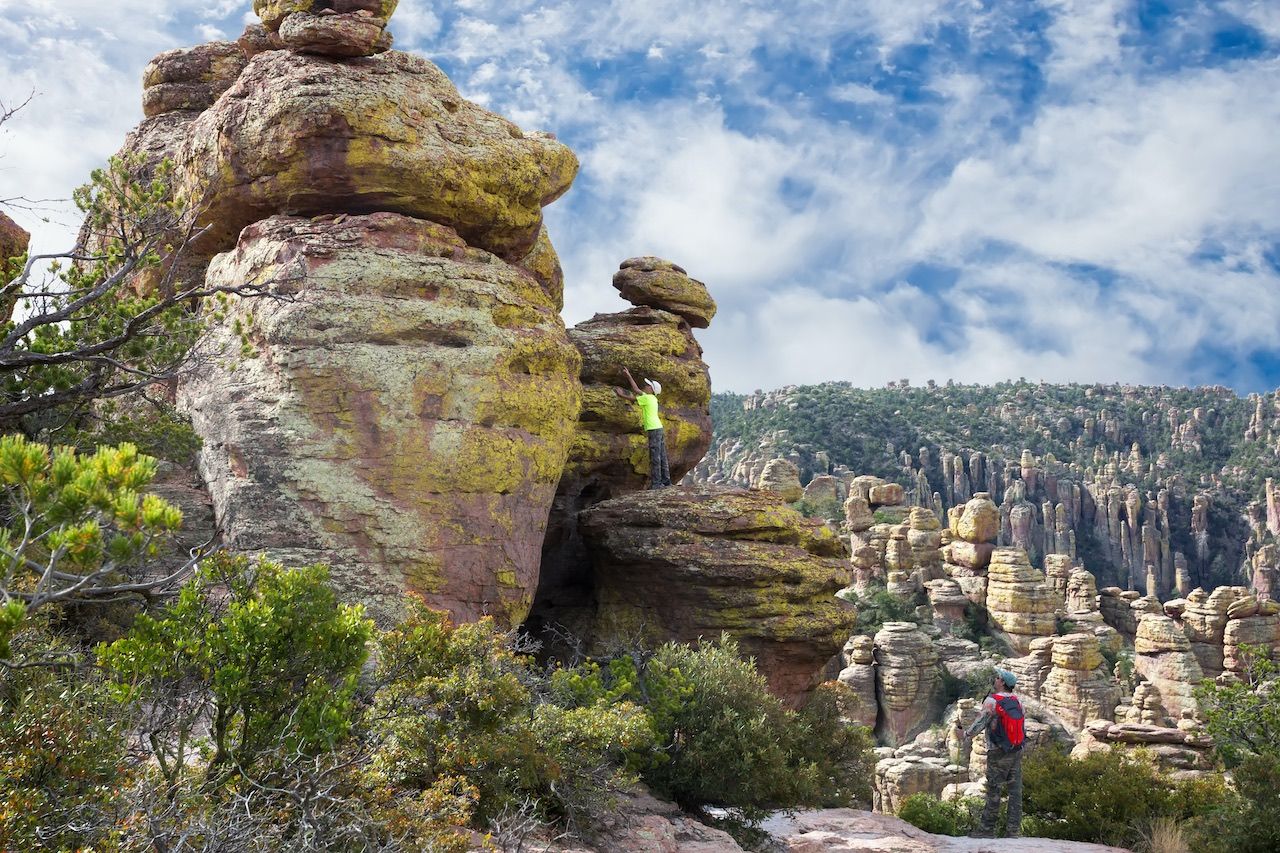
Photo: Shutterstock/IrinaK
Some 27 million years ago, Arizona was covered in volcanic ash, and Chiricahua National Monument and its vertical rock formations are hints of the turmoil this area once saw. Thirty-six miles southeast of Willcox, the nearly 12,000-acre plot of land is full of “hoodoos” (stone columns) and other alien-like structures that make visitors feel like they’ve stepped into another world — and like they’ve obviously missed some incredibly dramatic event that shaped this part of the world so uniquely. Seventeen miles of hiking trails and a scenic drive will get you up close and personal with the landscape’s most striking features.
5. Antelope Canyon
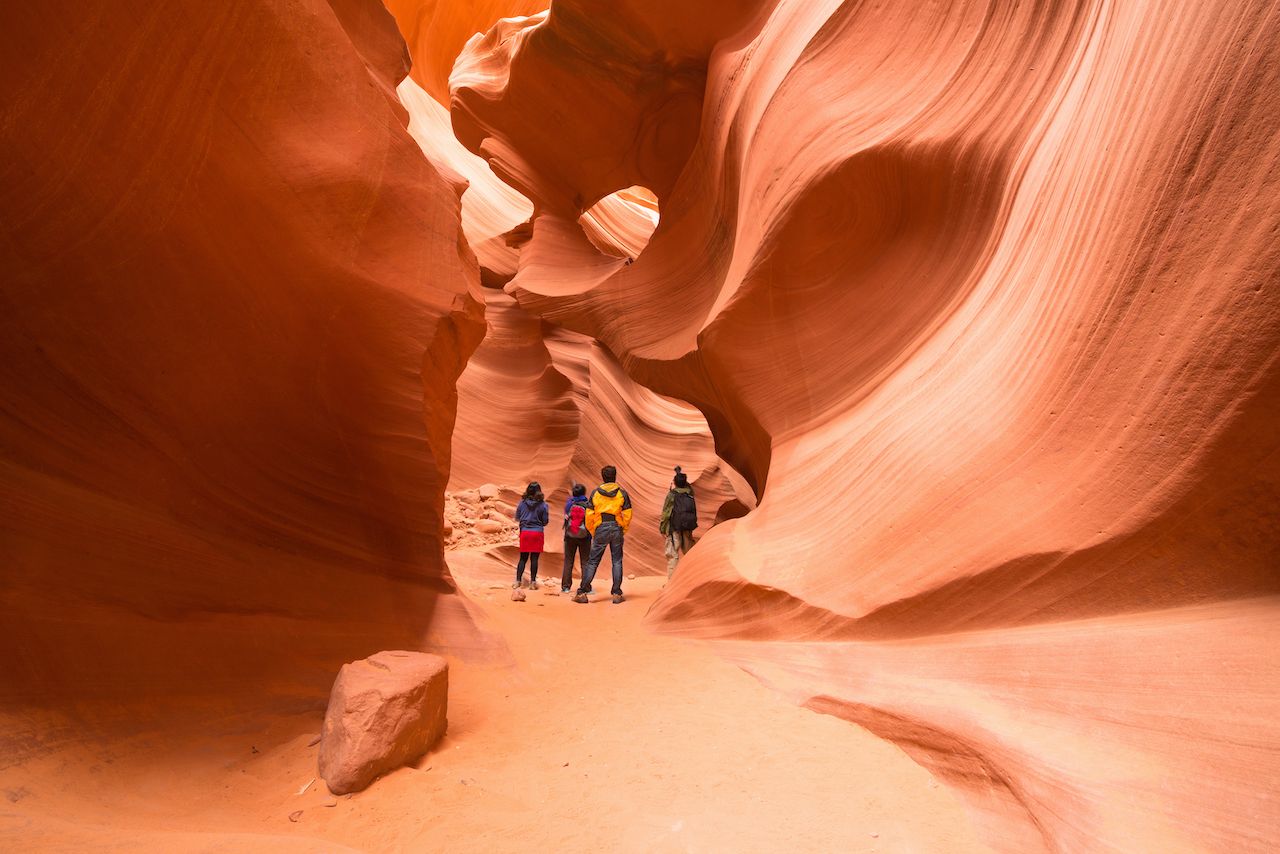
Photo: Shutterstock/Yongyut Kumsri
Located on Navajo land east of Page, Antelope Canyon is a slot canyon and divided into two parts: Lower Antelope Canyon (or the “Crack”) and Upper Antelope Canyon (or the “Corkscrew”). The latter is more commonly visited, its entrance at ground level, and sun beams are more likely to be spotted here than in the “Crack.”
6. Havasu Falls
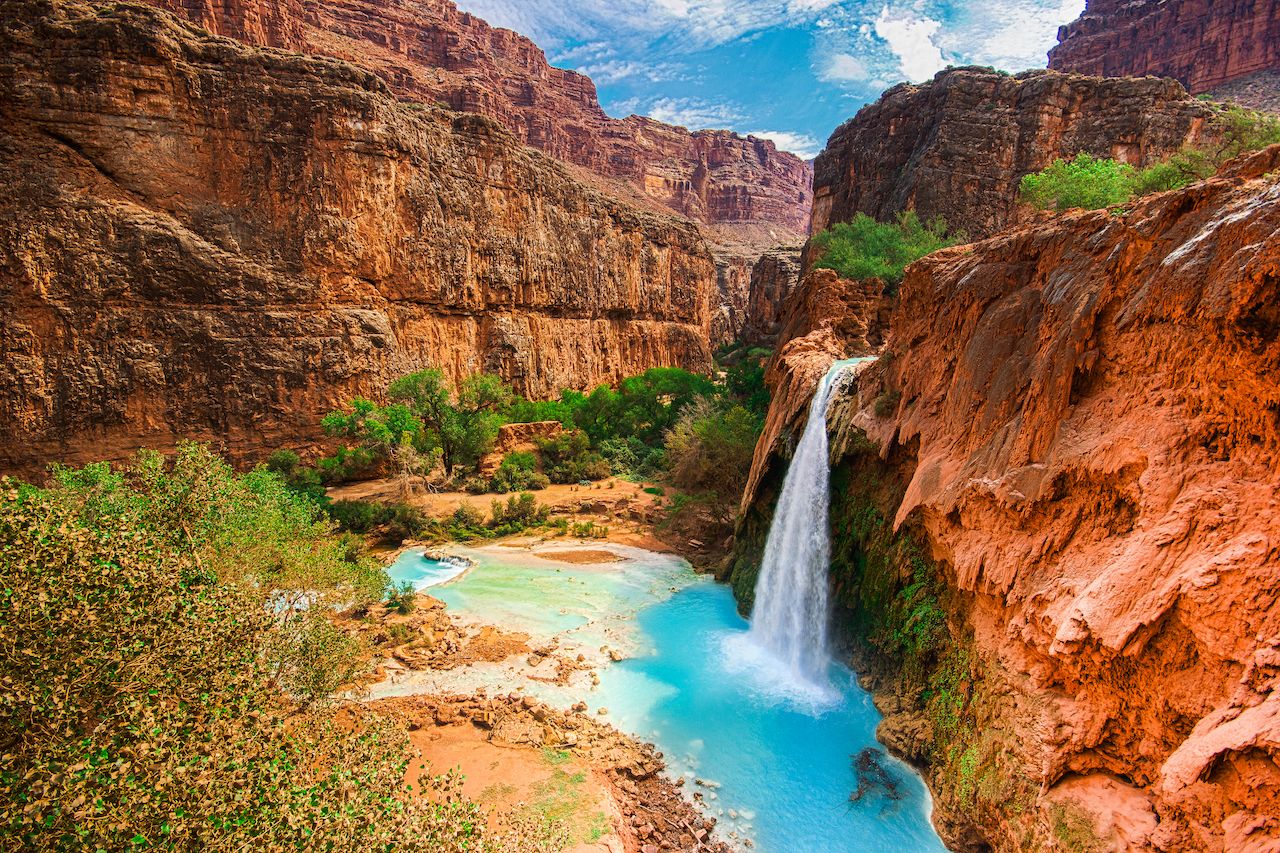
Photo: iacomino FRiMAGES/Shutterstock
In the depths of the Grand Canyon hide some unexpected views, like this one at Havasu Falls. The falls drops roughly 100 feet, and its formation is ever-changing, thanks to minerals in the water — it sometimes even breaks in two. Though it should be obvious from these epic shots that Havasu is a popular spot for campers, hikers, and photographers, what’s not clear is that you can swim behind the falls to a small rock shelter. On the opposite side are picnic tables, and there’s a campground above. At Havasu, you can literally eat, sleep, and drink at one of the most spectacular waterfalls in the U.S.
7. Vermilion Cliffs
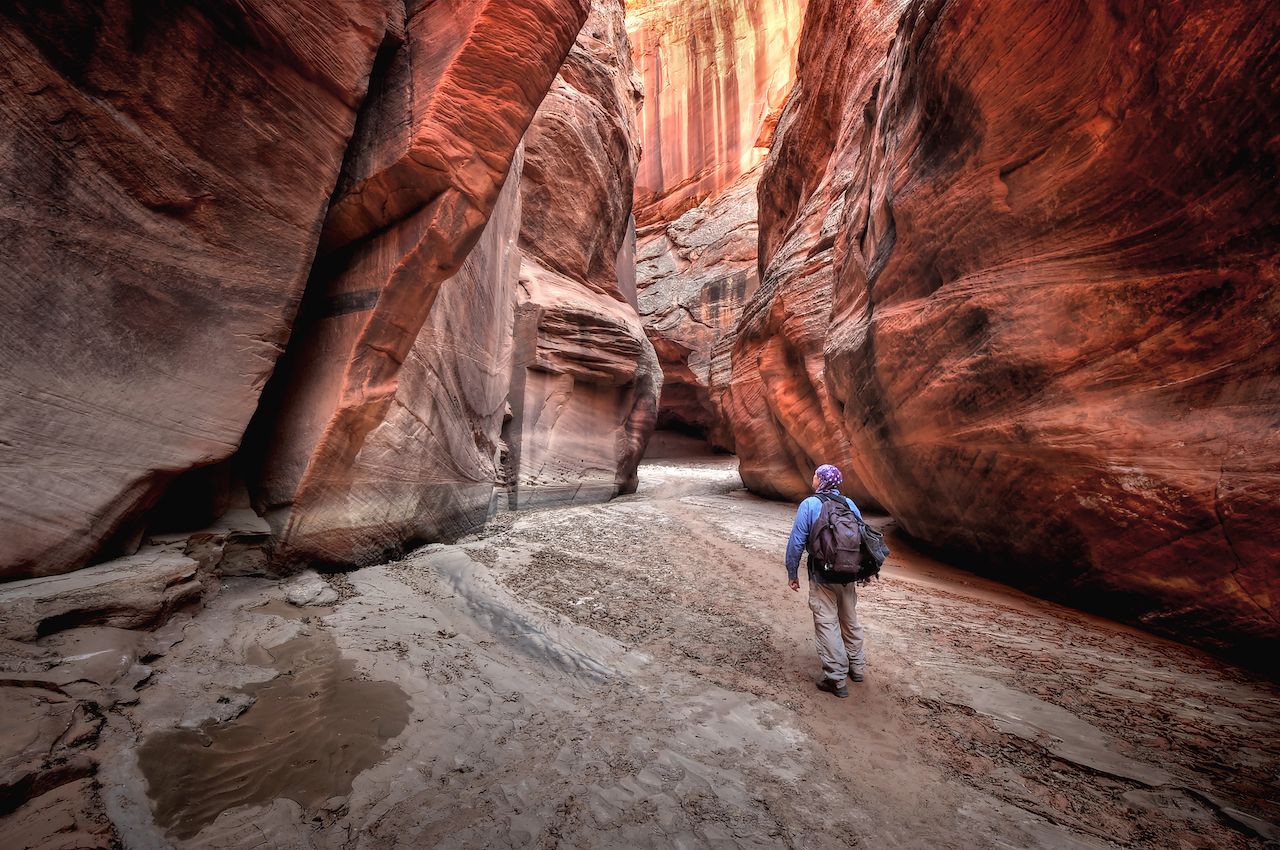
Photo: Sierralara/Shutterstock
Vermilion Cliffs National Monument contains the Paria Plateau, Vermilion Cliffs, Coyote Buttes, and Paria Canyon; of the “five-step staircase” of the Colorado Plateau, the Vermilion Cliffs comprise the second. To see formations like the ones pictured above, check out Wire Pass Trail. It’ll give you the option to go through Buckskin Gulch or even north to Coyote Buttes and the Wave. Just make sure to reserve your hiking permit online — only 20 are given out per day.
8. Horseshoe Bend
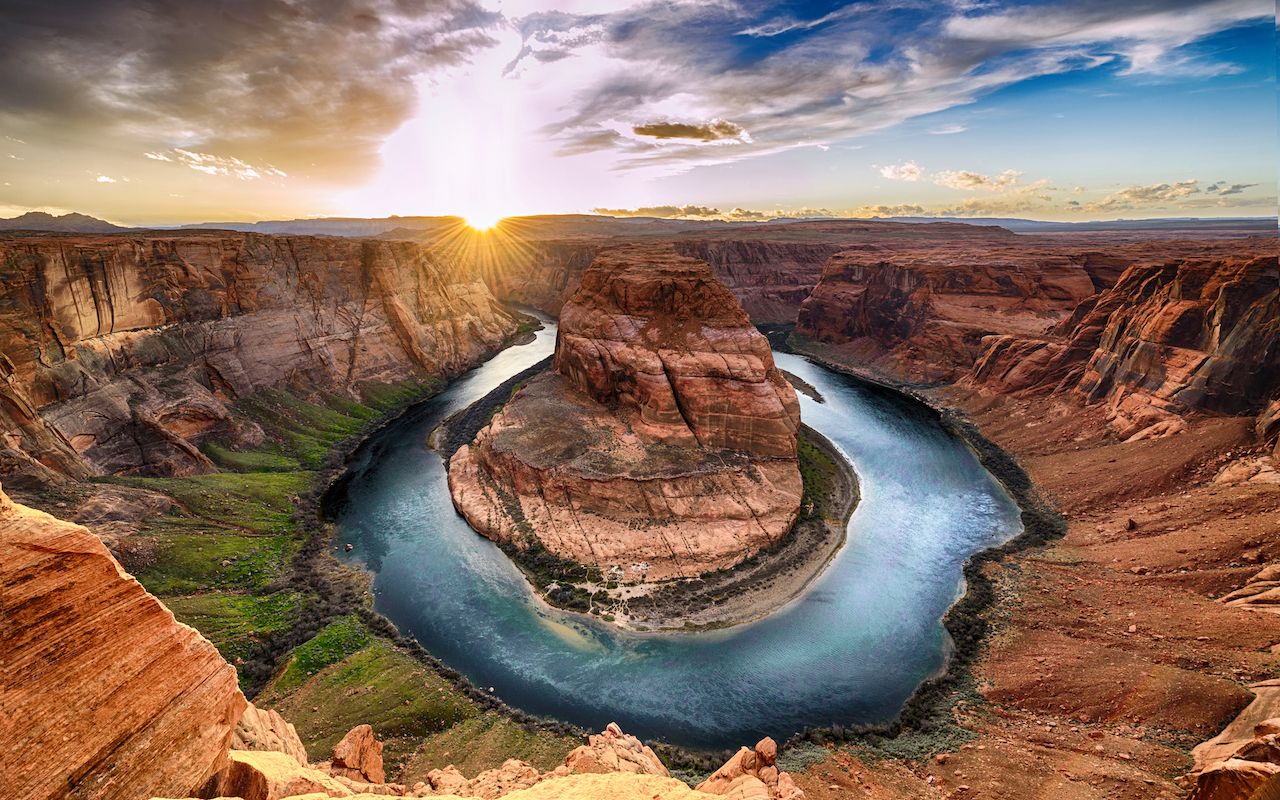
Photo: Wisanu Boonrawd/Shutterstock
Four miles southwest of Page, Horseshoe Bend was formed through millions of years of nature at work, and what you’re seeing now is just a snapshot of what this area looks like; in the future, the river may erode through the center rock, forming a massive natural bridge. A short 1.5-mile round-trip hike (or a quicker drive up the access road) will get you some of the most iconic views in all of Arizona.
9. Watson Lake
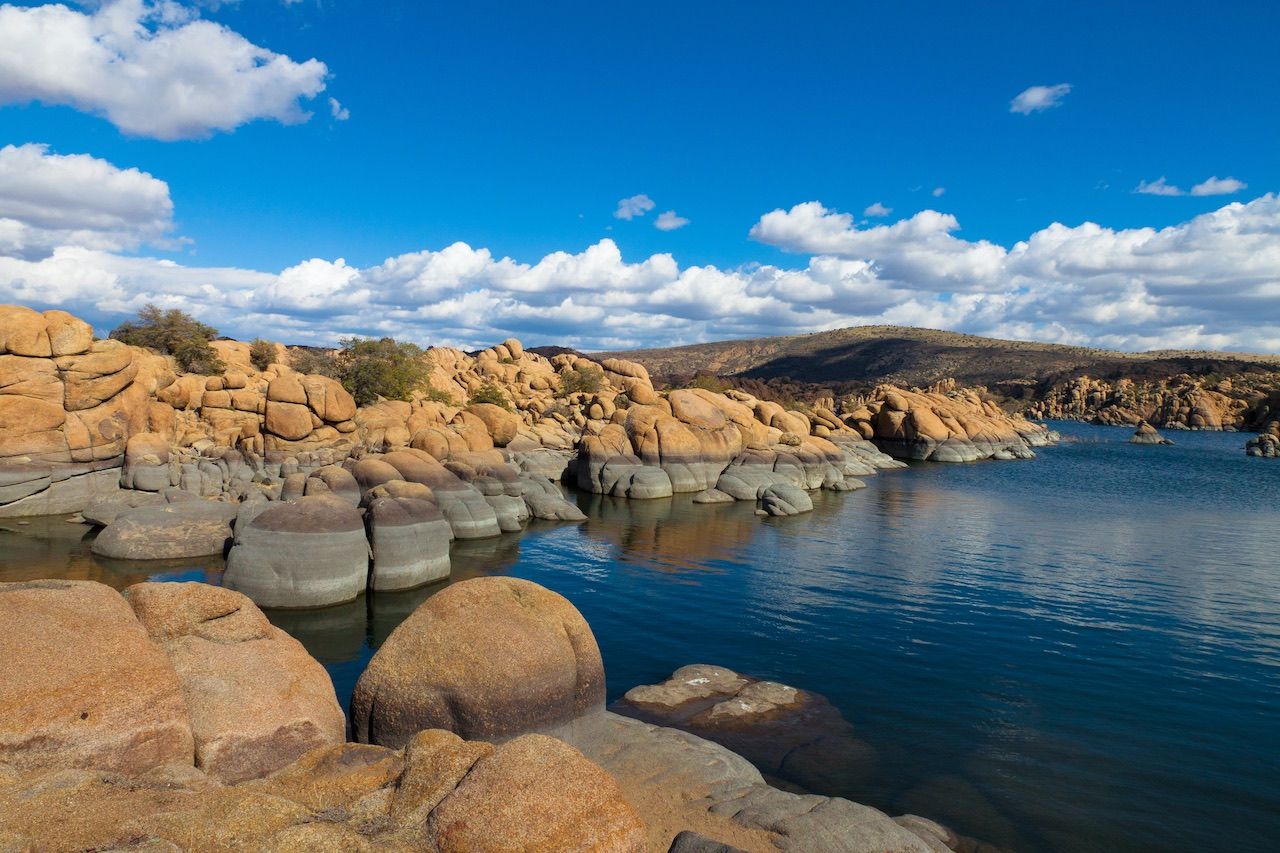
Photo: Shutterstock/Arlene Waller
What was originally nothing more than a utilitarian reservoir is now a beautiful recreational area set just outside of Prescott, Arizona. The city bought the land in 1997, realizing the lake was perfect for fishing and boating and that its granite cliffs ideal for top-roping and lead-climbing. Northern Arizona’s only rowing team also calls Watson Lake home.
10. Sedona
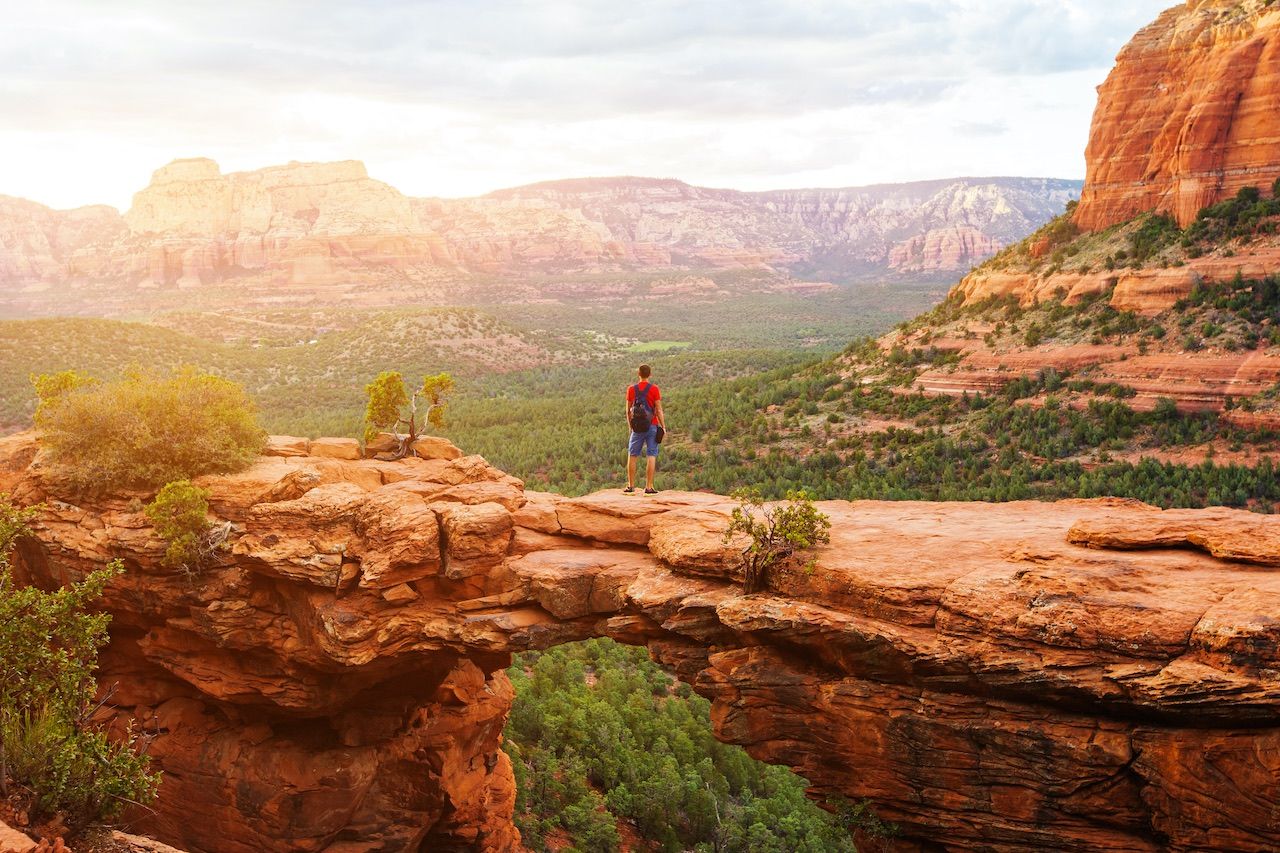
Photo: Shutterstock/Nikolas_jkd
South of Sedona, Bell Rock pops out of the ground and reaches an elevation of nearly 5,000 feet. The entire area is dominated by red-rock buttes and canyons and the wilderness of Coconino National Forest — natural architecture so grand it’s been deemed to possess a powerful spiritual energy.
11. Sonoran Desert
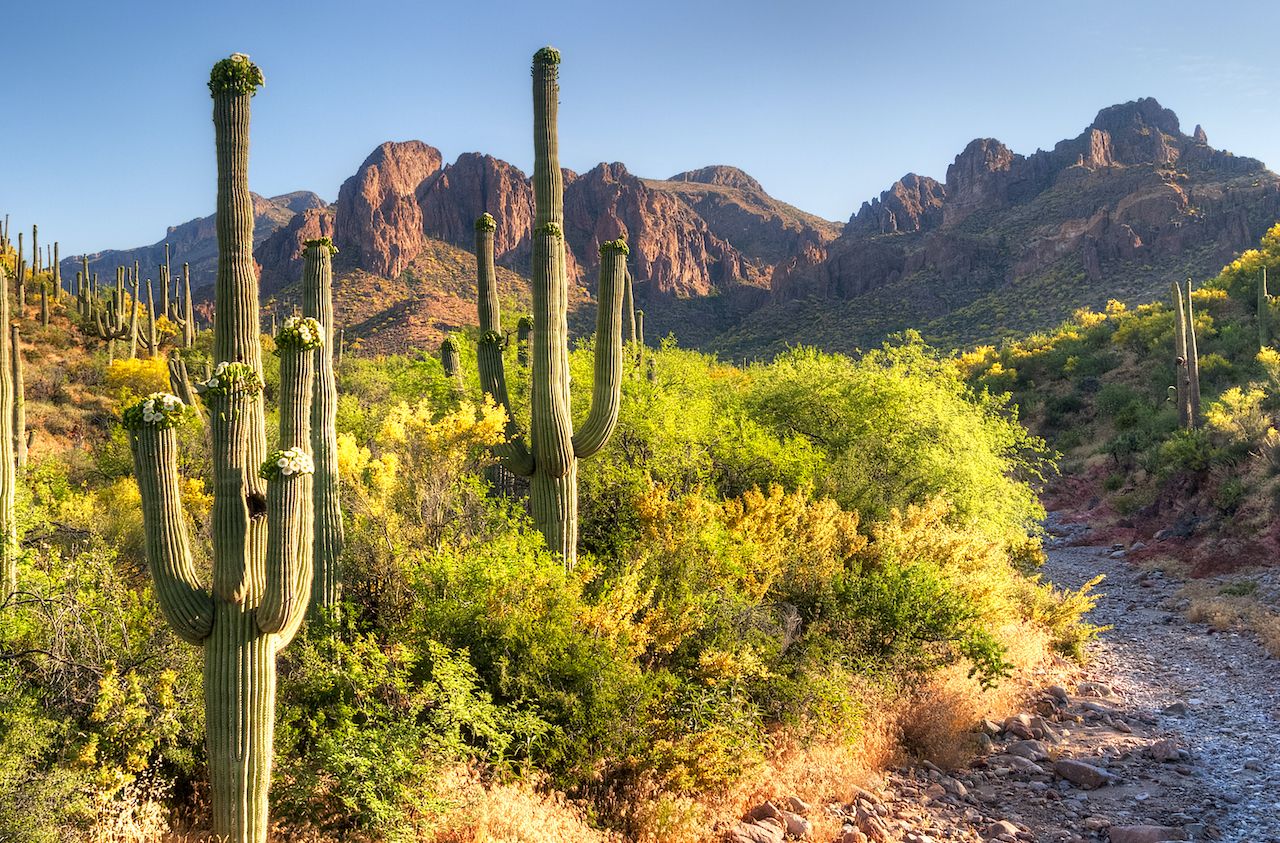
Photo: Anton Foltin/Shutterstock
Yep, it does rain in Arizona, even in the Sonoran Desert (the hottest desert in North America). There are two rainy seasons per year in this region, leading to a wide variety of flora and fauna that can only be found here.
12. San Francisco Peaks
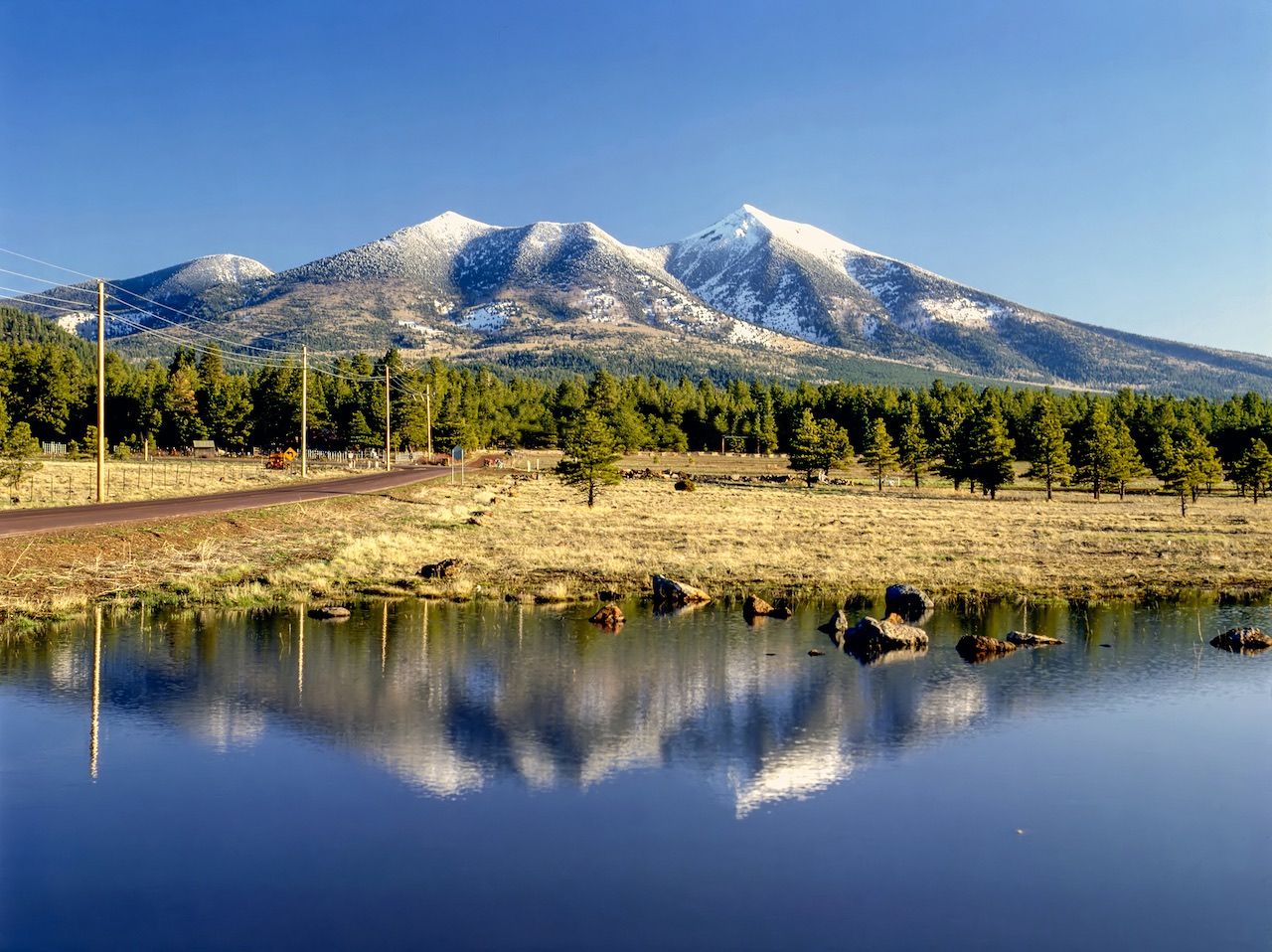
Photo: Shutterstock/Julius Fekete
The yellow aspen and ponderosa pine of the San Francisco Peaks prove that Arizona is far more than desert. The Coconino National Forest alone contains the red rocks of Sedona, these mountain forests, and areas of dry desert sands and alpine tundra. That’s code for hiking, swimming, and skiing — all in the same place. To explore the true diversity of Arizona, check out the 44-mile Peak Scenic Loop Drive. It’s closed to vehicles in winter but is accessible for skiing and snowmobiling.
13. Saguaro National Park
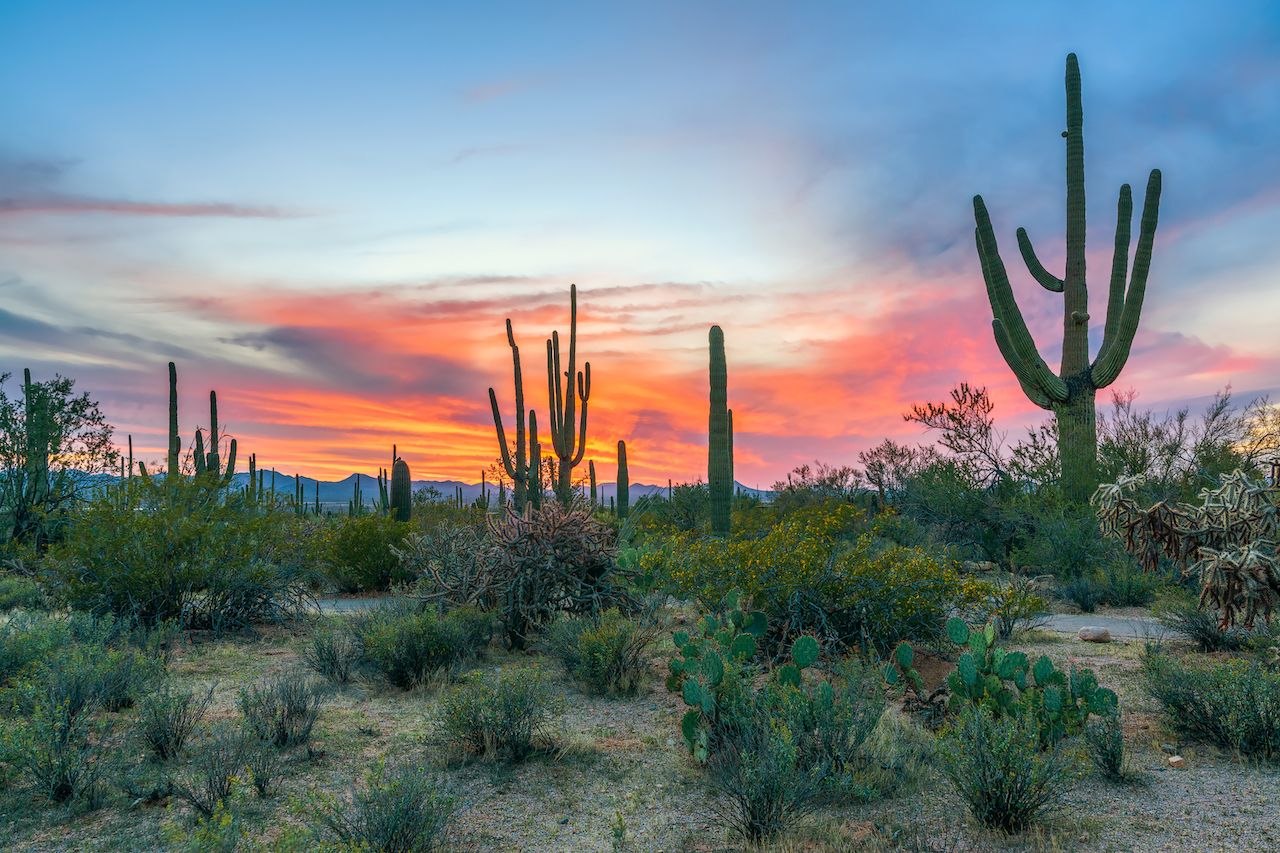
Photo: VIKVAD/Shutterstock
When a cactus gets its own national park, you know it’s a big deal. Near Tucson, this park was founded to preserve Arizona landscape, flora, and fauna at its finest. It’s divided into two sections: Saguaro Park East has the 8.3-mile Cactus Forest Loop Drive, with multiple points to pull off and hike. However, Saguaro Park West is more popular thanks to its higher elevations and overlooks that allow for easy access to the beauty of the park.
14. Petrified Forest National Park
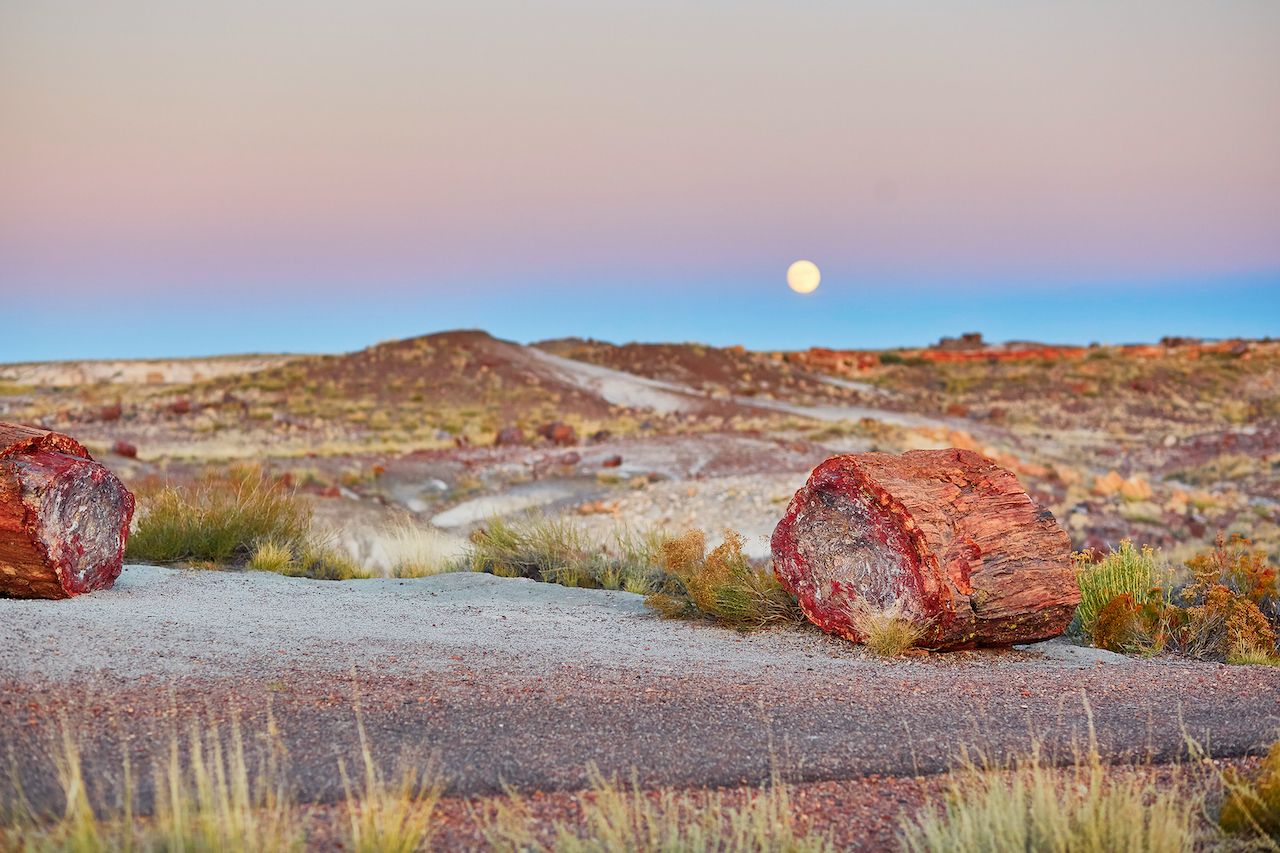
Photo: Ekaterina Pokrovsky/Shutterstock
The 170 square miles of Petrified Forest National Park look in many places like a different planet. The “Tepees” badlands, located in the section of park adjoining the Painted Desert, are particularly striking — those pictured above are known as “Blue Mesas,” thanks to their blue and purple coloring. The Tepees are the second-oldest formations in the park, dating back 225 million years. Long before cowboys and cactus, Arizona was humid subtropical rainforest, and Petrified Forest National Park preserves this period; it is, quite literally, a Jurassic park.

